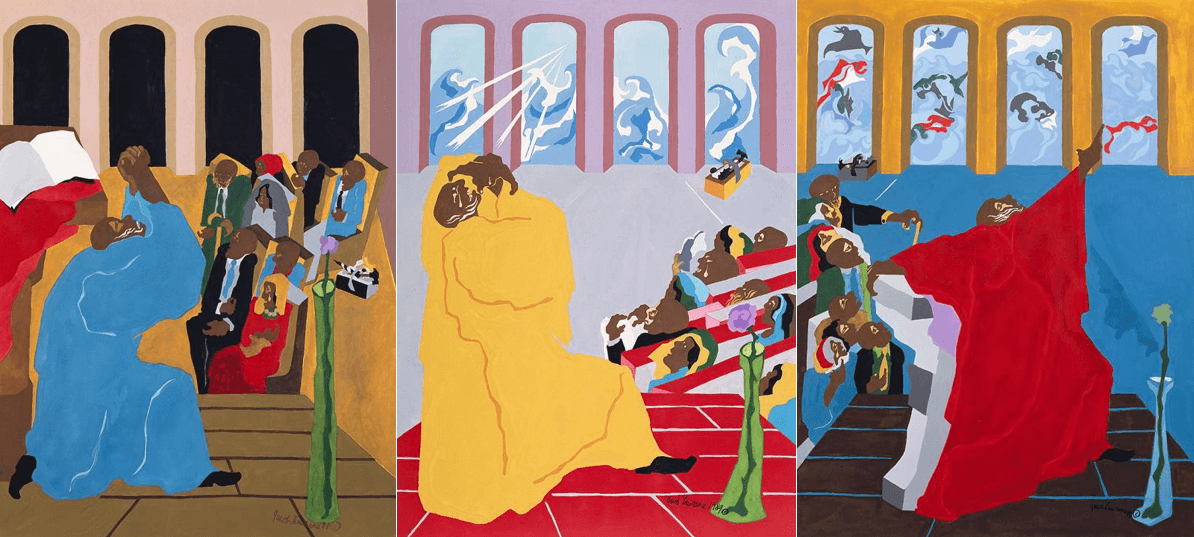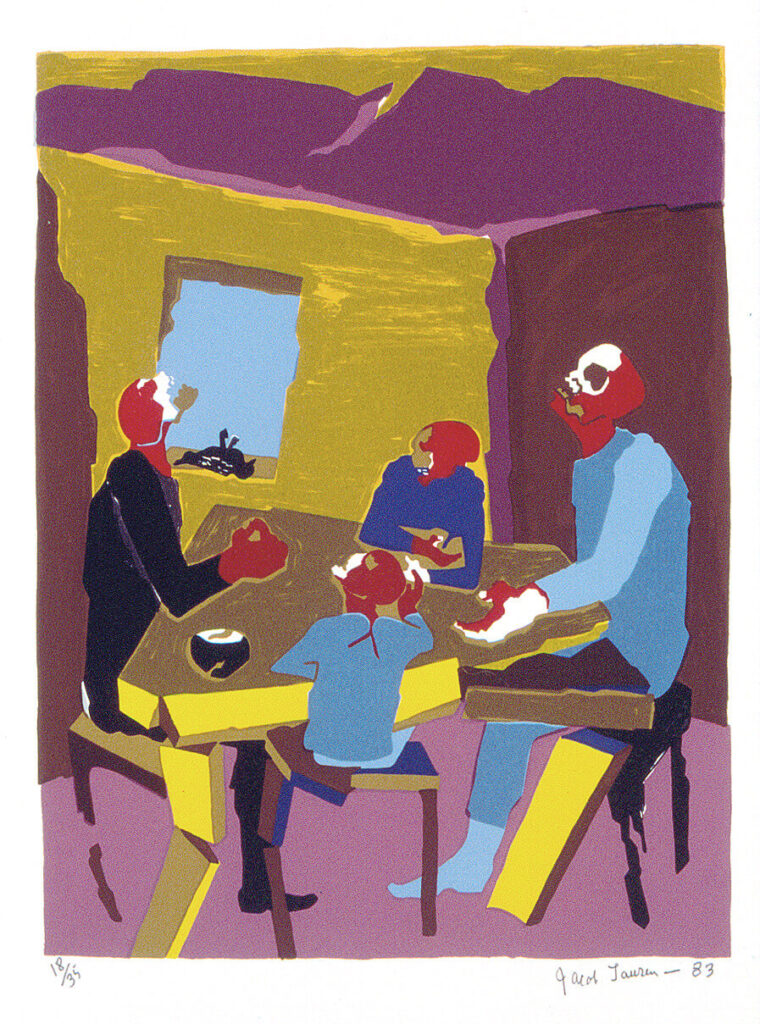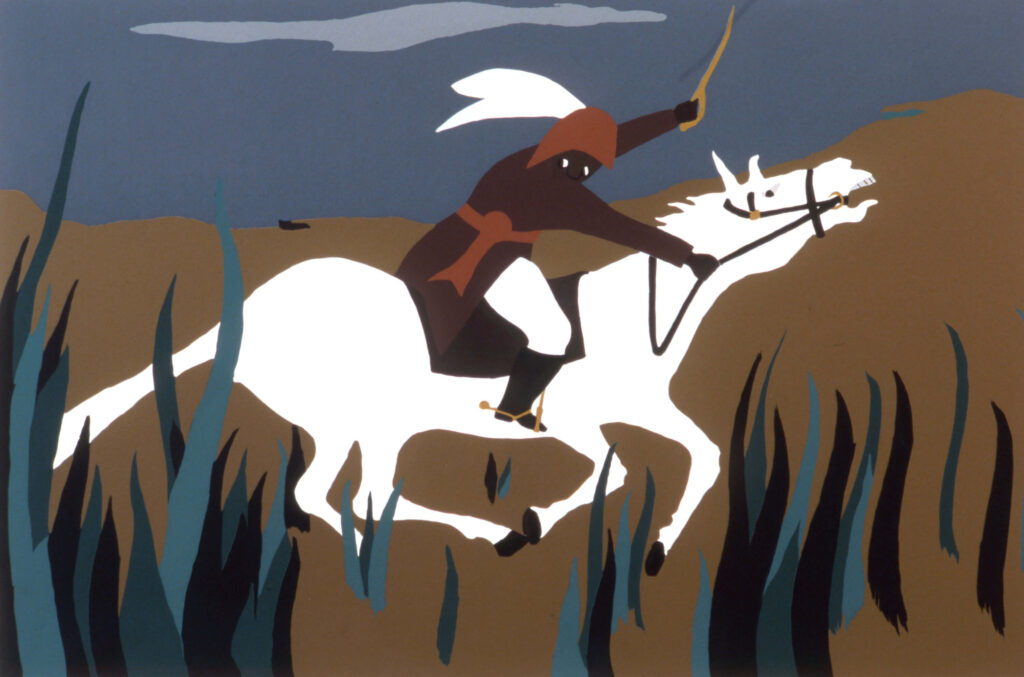
By Meghan E. Gattignolo
November is here, and the Customs House Museum & Cultural Center has a new and exciting exhibit ready for Museum guests to enjoy.
Jacob Lawrence is an important artist to come out of the Harlem Renaissance. Born in 1917 and a young man during the height of the cultural movement, Lawrence was surrounded and greatly inspired by the explosion of African American art, music and literature of this era. He began painting during the 1930s and the body of work he produced in the decades after, until his death in 2000, makes Jacob Lawrence one of the leading creative minds of the Harlem Renaissance. If you’ve never experienced Lawrence’s art up close, the latest exhibit Jacob Lawrence: Three Series of Prints is a fantastic opportunity. The prints featured in this exhibit include some of his most important work.
Social Realist
Much of Lawrence’s work features examples of social realism. In the mid-20th century, particularly following the Great Depression of the 1930s, artists developed a style of expression that cast a sharp spotlight on the struggles of real people, often from poor and marginalized demographics. In Lawrence’s case, his art featured the real experiences of Black Americans. Artists like Lawrence used images to change the way their audience viewed the world. Lawrence used simple but graphically stunning images with lots of stark color contrasts to express the emotion of others’ experiences.
In his famous series of prints Struggle and Migration, Jacob Lawrence captures the experience of Black Americans, as well as their ancestors’ experience throughout American history, including his own recent family history. Among the works Museum visitors will get to see in the Crouch Gallery right now, Lawrence captures the singular horror and destruction of an atomic bomb with vivid, unrelenting color in his Hiroshima print series.

Family
Jacob Lawrence, 1983
From the Hiroshima series
Artistic Historian
Jacob Lawrence famously became interested in history during his life and used what he learned in his art. The Harlem Renaissance oversaw a surge of interest in history within the African American community. For Lawrence’s part, he spent hours researching in libraries and participating in historical groups. The Great Migration affected the course of his life, as he was born after his parents moved from the South. His parents’ bold decision brought Lawrence into the environment that led to his creative successes. Knowing his own history made historical subjects that much more interesting and important to him.
In the exhibit, guests will see Lawrence’s telling of the story of Toussaint L’Ouverture, a figure he admired. L’Ouverture led the Haitian slave revolution that would eventually lead to the country’s independence, the first successful slave revolt. Lawrence painted many historical images telling the story of other figures he admired, such as Harriet Tubman and Frederick Douglass. As a lover of history, he has been quoted as saying “I do not look upon the story of the Blacks in America as a separate experience to the American culture, but part of the American heritage and experience as a whole.” Subjects of Lawrence’s other works include famous episodes in American history, such as Washington crossing the Delaware, but his images are singular in that they focus on the stark emotion that must have been present, rather than painting the scene in a purely heroic light.

The Opener
Jacob Lawrence, 1997
From the Life of Toussaint L’Ouverture series
Leading Man
Jacob Lawrence is widely considered to be one of the most important artists to come out of the Harlem Renaissance. He certainly was and remains one of the most well-known. During his entire career, Lawrence was admired and celebrated. He was recognized through awards during his lifetime, including the prestigious Spingarn Medal and the National Medal of Arts. Lawrence also dedicated time to teaching the next generation of artists, finally becoming a professor at the University of Washington. Lawrence still inspires today. Through newer artists like Meleko Mokgosi and Barbara Earl Thomas, Jacob Lawerence’s legacy shines with spectacular colors.
Visit the Museum today to fully enjoy Jacob Lawrence: Three Series of Prints for yourself, open now until the end of the year.
References
https://www.moas.org/Jacob-Lawrence-and-the-Harlem-Renaissance-1-57.html
https://www.theartstory.org/artist/lawrence-jacob/
https://americanart.si.edu/exhibitions/african-american-2012
https://www.moma.org/artists/3418
Featured photos: From the Genesis series, 1989

Meghan E. Gattignolo is a freelance writer and longtime Clarksville, TN resident. She loves to obsess about historical subjects and annoy her family daily with unsolicited random facts. Meghan holds a History B.A. from Austin Peay State University and lives in town with her husband and two daughters.